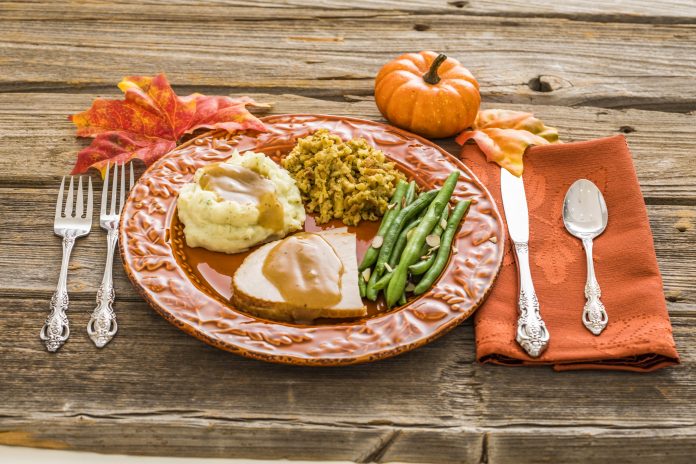Q: “My kids brought home a large haul of Halloween candy that I’m trying to avoid snacking on. With the remaining fall and upcoming winter holidays coming, I’m wondering if you can offer any tips to help me avoid gaining weight but still enjoy the holidays?”
A: Take heart – you aren’t the only parent tempted to eat their kiddos’ Halloween goodies. In fact, two-thirds of parents report that they do eat some of their children’s Halloween candy haul, according to the National Confectioners Association.
With the remaining fall and winter holidays approaching, many people are concerned about trying to stay healthy while also enjoying all the rich, delicious foods and traditions associated with the many celebrations that are or will be soon occurring through the end of the year.
While the issue of maintaining your weight or avoiding weight gain over the holidays is something that many people focus on this time of year, there are ways to enjoy the tastes of the holidays without packing on extra weight, says Jenny Lobb, a family and consumer sciences educator for Ohio State University Extension. OSU Extension is the outreach arm of The Ohio State University College of Food, Agricultural, and Environmental Sciences (CFAES).
Many people are looking for ways to either avoid temptation or make better choices that will allow them to maintain a healthy weight while they navigate all the indulgence of the season, she said
“I think the best piece of advice for this season is to create a daily routine and stick to it through the holidays and beyond,” she said, “not just for weight management, but to provide your body with the nourishment and energy it needs for optimal focus and performance each day.”
With that in mind, Lobb offers the following tips that can help you enjoy the holidays and still meet your food-related health goals.
- Use the U.S. Department of Agriculture’s MyPlate dietary guidelines as your guide to healthy eating. MyPlate encourages people to eat more fruits and vegetables, lean protein, and whole grains, including advocating that people make half of the food on their plate fruits and vegetables.
- Fruits, veggies, protein, and whole grains help contribute to a feeling of fullness while providing the nutrients our bodies need. Filling up on those foods first might help you eat less of the other, richer foods that you might encounter later.
- Celebrate Your Plate (celebrateyourplate.org) has easy, tasty recipes that feature fruits and veggies that you might want to try.
- Plan ahead—whether you are packing a lunch or snacks—for your workday. Take snack breaks and a lunch break, taking time away from work or the screen to prepare and eat healthy food, and to get reacquainted with home cooking.
- Pay attention to what you bring into your home, planning meals and doing grocery shopping so you have the ingredients to prepare those meals rather than filling up or mindlessly snacking on less healthy foods all day long.
- Keep an eye on your portions. In the words of the Dietary Guidelines for Americans, “enjoy your foods, but eat less.” You can still enjoy those special holiday treats, but keep an eye on the portions and try not to overdo it. Filling up on fruits and vegetables first might help you stick to smaller portions of the richer foods you choose to eat.
- Limit your liquid calories. Lots of holiday drinks such as alcoholic beverages, eggnog, and festive coffee drinks contain more calories and sugar than some desserts. So, keep an eye on the beverages that you’re choosing, try to fill up on water first, and then treat those richer drinks more like desserts or sweets.
Lastly, try to understand that not all your holiday eating habits are going to be perfect, so cut yourself some slack and enjoy the season.
Chow Line is a service of the College of Food, Agricultural, and Environmental Sciences and its outreach and research arms, OSU Extension and the Ohio Agricultural Research and Development Center. Send questions to Chow Line writer Tracy Turner, 364 W. Lane Ave., Suite B120, Columbus, OH 43201, or turner.490@osu.edu.












